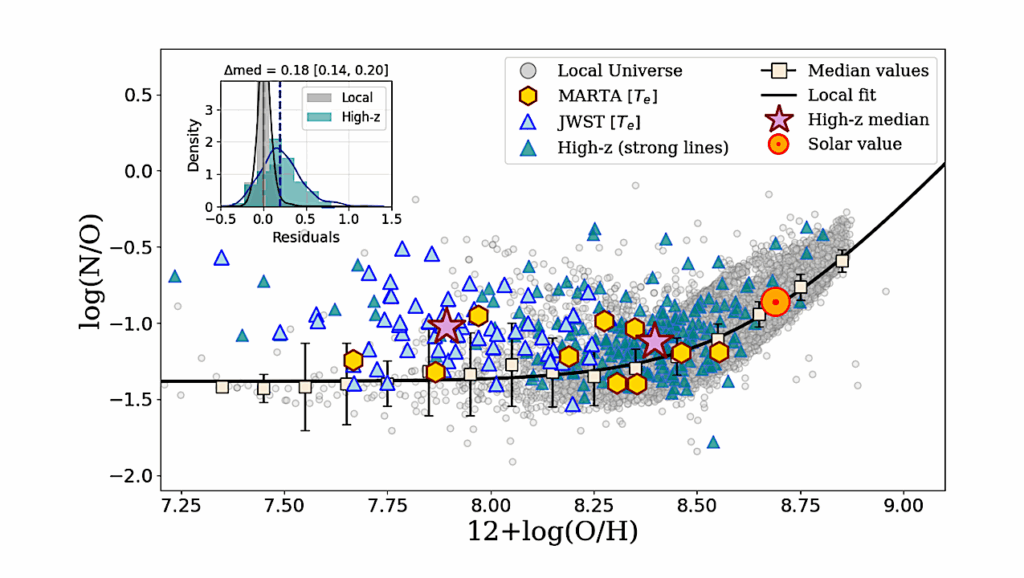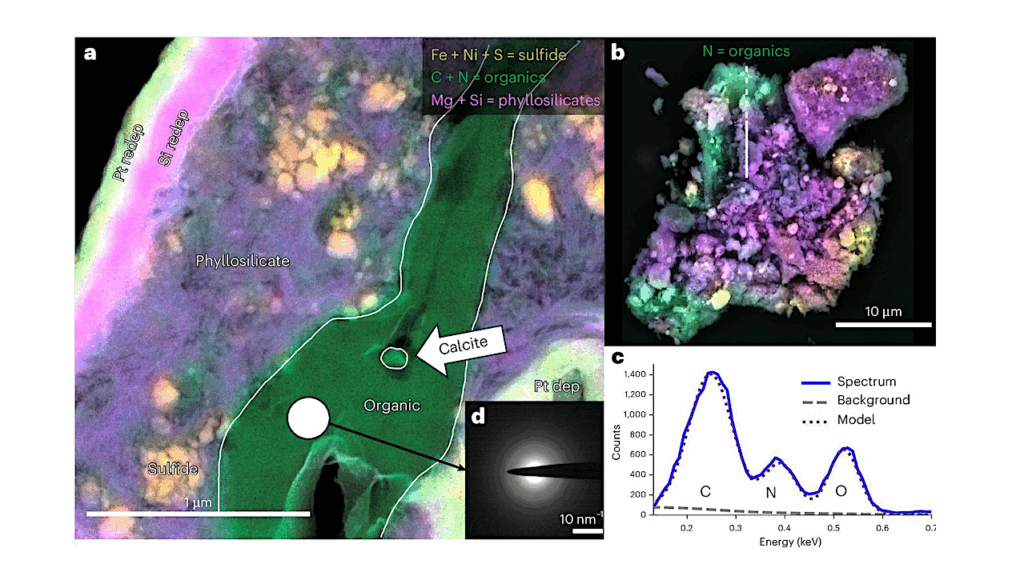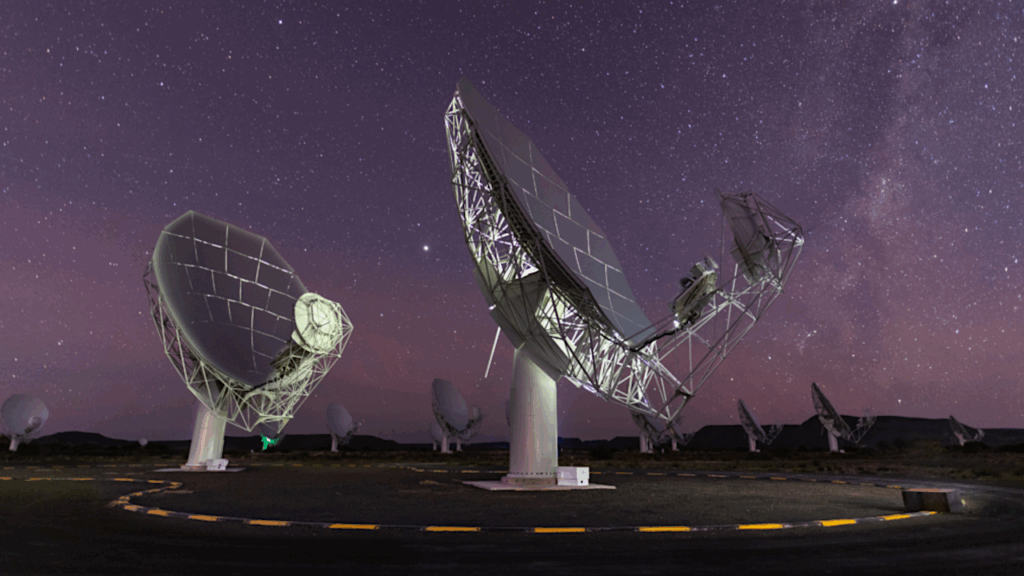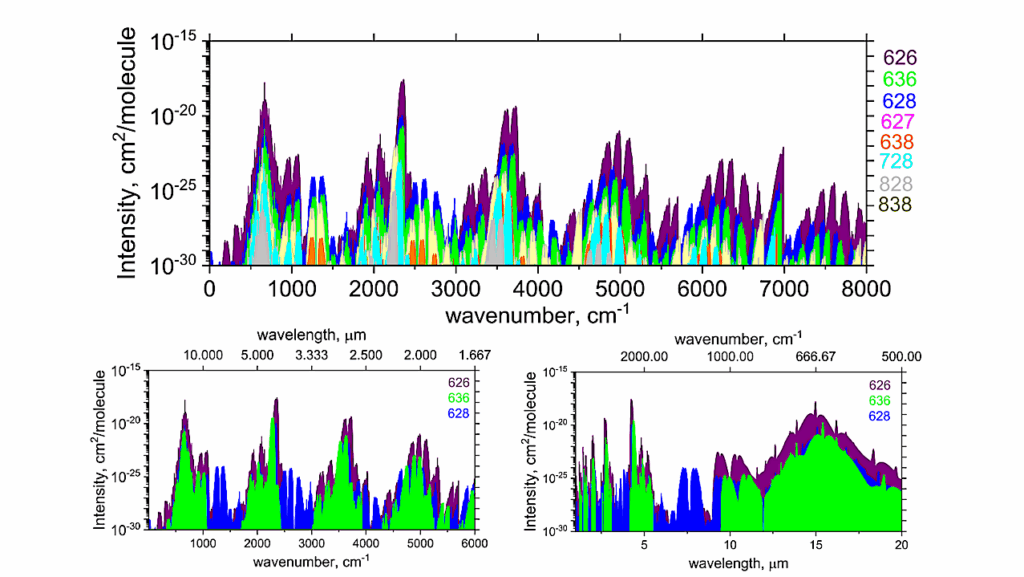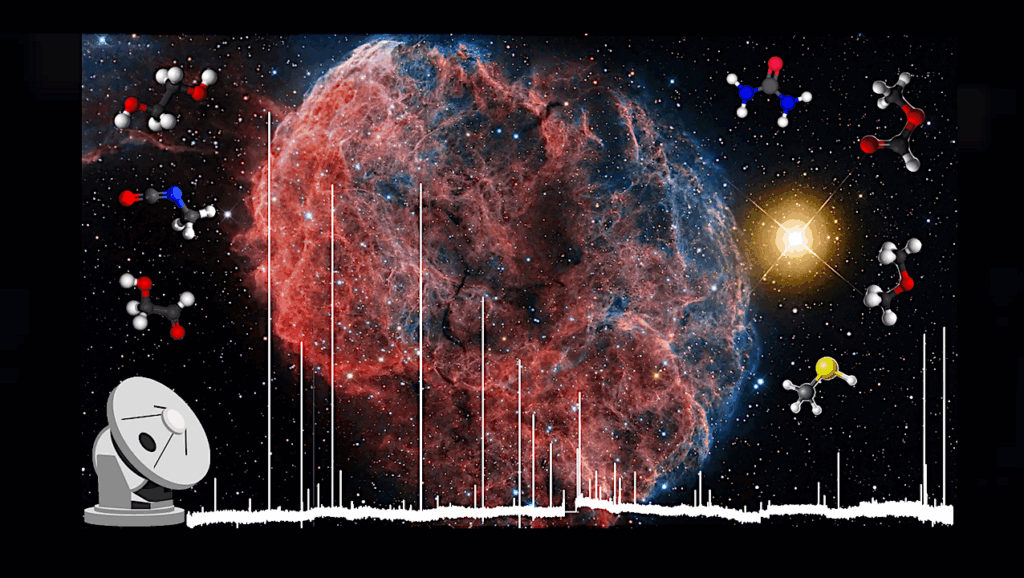A Sensitivity Analysis Of Interstellar Ice Chemistry In Astrochemical Models
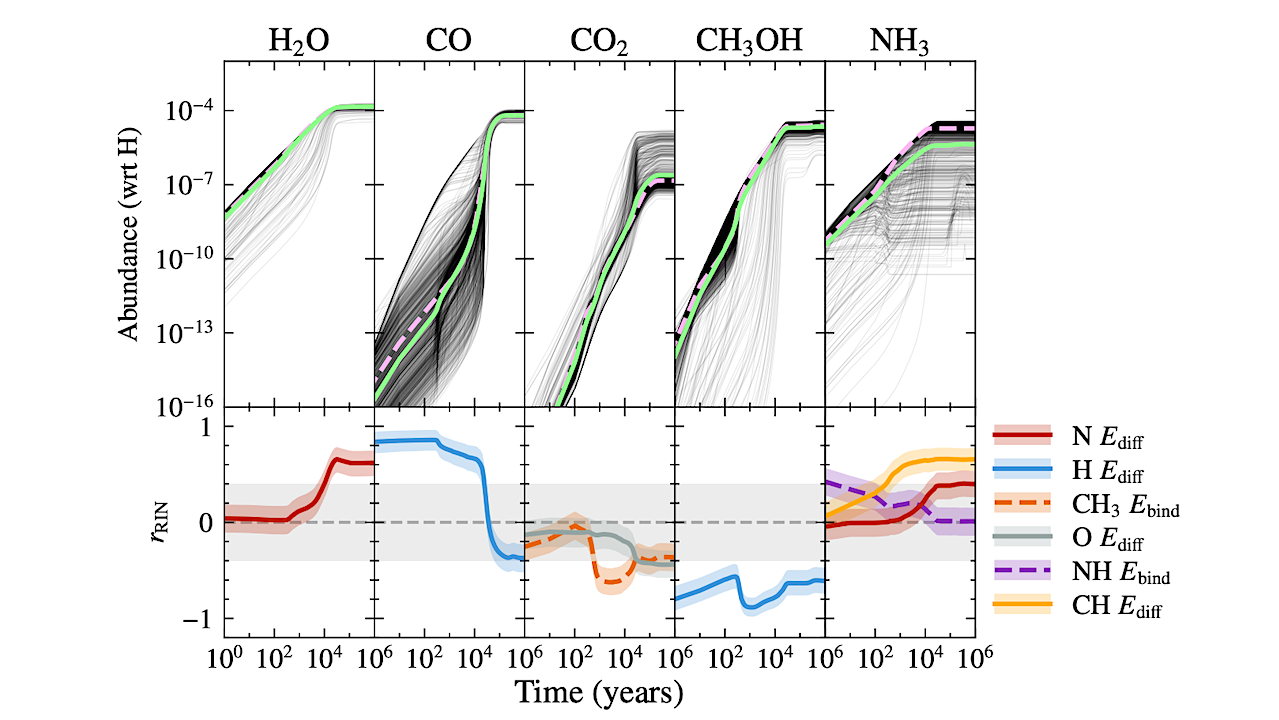
Astrochemical models are essential to bridge the gap between the timescales of reactions, experiments, and observations.
Ice chemistry in these models experiences a large computational complexity as a result of the many parameters required for the modeling of chemistry occurring on these ices, such as binding energies and reaction energy barriers.
Many of these parameters are poorly constrained, and accurately determining all would be too costly. We aim to find out which parameters describing ice chemistry have a large effect on the calculated abundances of ices for different prestellar objects.
Using Monte Carlo sampled binding energies, diffusion barriers, desorption and diffusion prefactors, and reaction energy barriers, we determined the sensitivity of the abundances of the main ice species calculated with UCLCHEM, an astrochemical modeling code, on each of these parameters.
We do this for a large grid of physical conditions across temperature, density, cosmic ray ionization rate and UV field strength. We find that, regardless of the physical conditions, the main sensitivities of abundances of the main ice species are the diffusion barriers of small and relatively mobile reactive species such as H, N, O, HCO, and CH3.
Thus, these parameters should be determined more accurately to increase the accuracy of models, paving the way to a better understanding of observations of ices. In many cases, accurate reaction energy barriers are not essential due to the treatment of competition between reactions and diffusion.
Tobias M. Dijkhuis, Thanja Lamberts, Serena Viti, Herma M. Cuppen
Comments: 16 pages, 8 figures, submitted to Astronomy and Astrophysics, comments are welcome!
Subjects: Astrophysics of Galaxies (astro-ph.GA)
Cite as: arXiv:2511.01042 [astro-ph.GA] (or arXiv:2511.01042v1 [astro-ph.GA] for this version)
https://doi.org/10.48550/arXiv.2511.01042
Focus to learn more
Submission history
From: Tobias Dijkhuis
[v1] Sun, 2 Nov 2025 18:36:08 UTC (27,218 KB)
https://arxiv.org/abs/2511.01042
Astrobiology, Astrochemistry,


